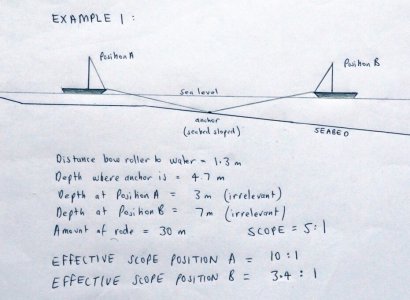geem
Well-known member
Hmm, we weigh 40,000lbs most times we have lifted out. I selected the Spade for it's actual weight not the empty weight. We just weighed the rudder. It's 250kg. My 30kg Spade is 19kg with no lead in the tip. Will it make it better if I add 5kg to the tip weight?Fortress produce a great anchor, but they don’t set well (or sometimes at all) in hard substrates and are poor at responding to changes in the direction of pull. Unfortunately, they often develop a high list and break out as they try and rotate. These reasons are why they are a poor primary anchor (although they are an excellent kedge anchor).
Your Spade will work much better in this situation and a 30 kg model is a decent size for your Trintella 44. On my reading this 30 kg Spade is oversized for your 44 foot 32,000 lb yacht. (Spade rate your 30 kg model as suitable for boats up to 65 feet) so perhaps you are member of the BIB (Big Is Better) club without knowing it.
I have never had any trouble setting my oversized Mantus M1 anchor, or before this my identically sized Rocna anchor. The Mantus M1 in particular is invariably the best set anchor in the anchorage . You can see photos in the link below showing this anchor together with the anchors from all the other boats nearby and make up your own mind.
I have used an oversized Rocna or Mantus M1 over 16 years of full time cruising, anchoring almost every day. I often dive to observe how the anchor is performing. These anchors have always "shuffled" ie remained buried and engaged with the seabed when rotating around in response to a change in wind direction. Once again, there are many photos of this happening in the link below.
In short, I don’t believe there is any risk of the issues you have been having with your Fortress anchor if you oversize a good primary anchor. The fact that you have observed a deep setting depth from your relatively large Spade anchor reinforces this view.
Photos of Anchors Setting - Page 111 - Cruisers & Sailing Forums

